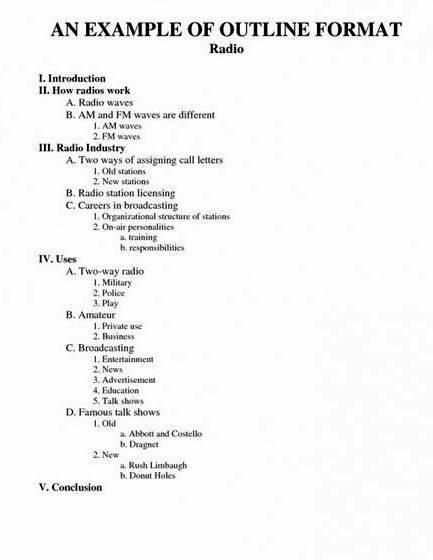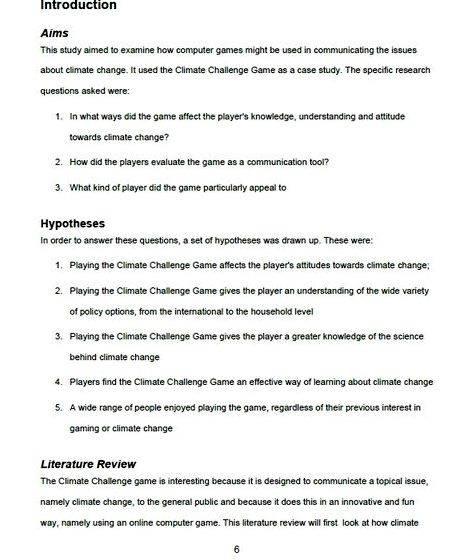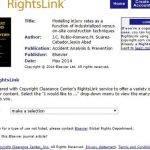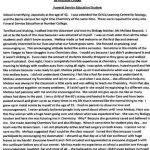Thesis Introductions — the Literature Review
* Expanded Intro * Concise Intro
— write to prove you know — write for expert audience requiring less explanation
what you know
— “broad disciplinary knowledge”
* Expand Upon
— history
— complex ideas (propositions)
— terms (especially new ones or acronyms)
The length of the literature review is generally in direct proportion to the complexity of the research question and outcomes as they are represented in the published literature. How do you gauge this? Let the title be your guide!
The introduction to a research report accomplishes two goals:
• informs the reader by providing information from the research literature necessary to understanding the project;
• persuades the reader that the research question is valid by providing the gap in the literature.
How are these goals accomplished? The writer provides a brief review of the literature in the correct order (given below!). The content of the introduction informs; the organization of the introduction persuades.
5 steps to Writing the Introduction (same as in a published research report, but in a thesis, step 3 is broader in scope)
- Establish Topic
- Provide significance
- Review the relevant literature
- Point out the gap
- Reveal the research question (and sometimes, hypotheses)
Establish Topic
You might have noticed while reading in the research literature that research reports tend to start immediately there’s very little &”warm up&” material involved. However, we are so used to writing this way that it may not be possible to just start at the beginning. If this is the case, go back and cross out the first couple of lines.
Provide Significance
The second step to the introduction is to offer the first bit of persuasion to the reader: show the importance of the topic by offering something of practical or research significance. However, it is very important for the writer to understand that &”significance&” does not mean an opinion about why the topic is important. Rather, the significance comes from the research literature, too, and is usually established in terms of practical, clinical or research significance.
Review the Literature
Following the first paragraph which introduces the topic and provides significance, the writer must now review the literature for the reader. The literature review (hereafter, &”lit review,&” the short phrase used by research writers everywhere) accomplishes many objectives at once. First, the lit review informs the reader of the most important research needed to understand the research question. Second, the lit review gives credibility to the writer as someone who knows what they are talking about. Third, the lit review is organized so that the research question is validated; in other words, the review leads the reader to a &”gap&” or &”conflict&” in the literature.
This is not as complicated as it sounds. You’ve got the annotated bibliography to help organize the literature you’ve read. You’ve got the research question. The task is to join the two pieces. Before worrying about the order of the paper, get the literature organized.

The outline below is called a &”topical outline&” its purpose is to help writers get organized rather than dictate order or hierarchical relationships. Using this outline, group together some of the articles that logically go together.
The &”gap&” in the literature is a conflict or missing piece of information which your research question will answer. If the research has already been done, then why waste your time and the reader’s time with all this work? The gap also explicitly identifies the contribution a piece of research makes. It’s as though the writer is saying &”See, Scientific Community, this is what we know but this is what we do not know.&” The reader needs to be shown that this gap exists in order to believe that the research is valid. Providing the gap is part of the writer’s job. The “gap” is the only place where the writer/researcher should draw attention to possible unanswered questions. Unlike Review papers where the writer points out unresolved issues as part of the critique, in a research report of any kind, ALL questions posed in the Introduction are supposed to be addressed via the experiment. Limit questions to only those your research is set up to answer. (The other questions still left may be taken up in the Discussion section.)
The Research Question
The final part of the Introduction is the Research Question this is the part that everything else has been leading to. This is where the writer presents the question that will answer the gap as revealed by the literature to be a missing piece of the topic’s research puzzle! The RQ may be expressed as either an actual question or a declarative sentence. Some journals seem to prefer that research writer’s express the RQ as a question; some prefer the RQ is expressed as statement. Following the research question may be a hint of method, hypotheses, or nothing at all.
Outline for Lit Review
This outline is very similar to the one used for writing a Review paper — just remember that any critique or evaluation that was included in the body of the Review must be removed from the Thesis introduction.





 Permission to use images in thesis writing
Permission to use images in thesis writing Bibtex phd thesis dissertation search
Bibtex phd thesis dissertation search Writing phd thesis in word
Writing phd thesis in word Artist village thesis report writing
Artist village thesis report writing Research methods and thesis writing 2007 ed. pdf
Research methods and thesis writing 2007 ed. pdf






